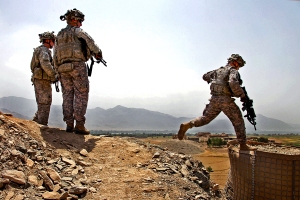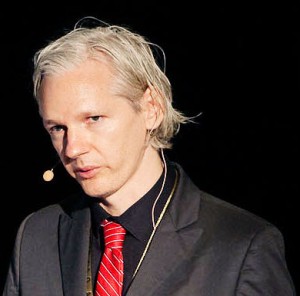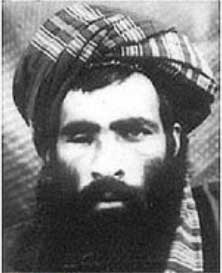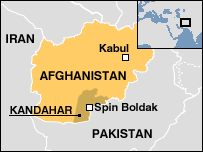Document Friday: wikileaks, Raw Intel, and the Rise of the Taliban.

Soldiers from the 1st Battalion, 32nd Infantry Regiment in Konar province, Afghanistan, Aug. 14, 2009
What a week its been for us document hounds!! The dust is still settling from the wikileaks dump of over 70,000 raw, uncensored US military intelligence reports from Afghanistan. They have certainly revealed some interesting tidbits [Major caveat: just because the docs report these things does not make them true; they were composed quickly in the rough Afghan terrain under harsh battle conditions and often relied on unconfirmed sources , even rumors]:
- According to first hand accounts, the Afghan police and army are incompetent and corrupt.
- The Pakistani Inter-Services Intelligence agents routinely supported (support?) the Afghan insurgency.
- There is a mysterious Task Force 373 (assassination squad?) reminiscent of the Phoenix Program in Vietnam.
- There are reports of attacks from “Turkish fighters” (Turkey is our NATO ally).
- The Taliban used a surface to air missile to shoot down a US Chinook helicopter (This has not been seen since the Afghan-USSR war; the DOD now denies that this happened).
- Reports of the Taliban’s attempts to obtain chemical weapons.
- And the bombshell -sorry, no pun intended- a (probably false) report that Bin Laden had already died in a Peshawar hospital in June 2007.
And all that is just from a tiny snippet of the documents. I generally agree with National Security Adviser Jim Jones’s assertion the leaked documents support President Obama’s choice of “a new strategy with a substantial increase in resources for Afghanistan, and increased focus on al Qaeda and Taliban safe-havens in Pakistan.” I also disagree with the President’s statement that, “these documents don’t reveal any issues that haven’t already informed our public debate on Afghanistan.” Spencer Arkerman’s take at Dangerroom is closer to the truth: the documents are “a real-time account of how the U.S. let Afghanistan rot,” an account heretofore hidden from the American public.
And then there’s the National Security Archive versus wikileaks angle.” That is, the “Archive way” of using official, legal (and flawed) channels to get documents and the “wikileaks way” of using unofficial, illegal (and flawed) channels to get documents. (FYI, even if an agency sends the National Security Archive a classified document by accident –which they do(!), we return it immediately without reading it.) My oppinion is similar to that of our Director Tom Blanton, who told Kojo Nnamdi that despite breaking laws, wikileaks’ release of these documents “falls under the journalist function of the First Amendment” and that the documents will hopefully “spark a new level of the debate about the Afghan War.” (And if you haven’t seen it yet, check him out on Colbert too!)
The final critique I’d like to touch on is the much-reported fact that the wikileaks documents were “only” field reports and raw intelligence, not higher-level, vetted, analyzed intelligence. Which brings us to Document Friday. Today’s document is one from our growing Afghanistan collection and is an example of what happens to the “raw” wikileaks field reports after they are “digested” and melded into more comprehensive (and we hope) accurate reports. This 1994 cable is entitled “New Fighting and New Forces in Kandahar.” The “New Forces” are the Taliban. It’s a gripping read.
A careful reading of this State department cable shows that it was cobbled together from a number of disparate field sources and reports (like the wikileaks docs). It’s full of phrases like, “speculation is rife,” “according to multiple sources,” “[redacted] modestly noted,” “reportedly,” and “in what is almost certainly an exaggeration.” An analyst used his best judgment to compile the raw intel into an accurate synopsis.
As the heading states, the cable was composed at the American Consulate in Peshawar and sent to the Political Adviser at CENTCOM, as well as to the Afghanistan and Pakistan desks at the Department of State in Foggy Bottom. From there, the report could have been “digested” again, and used to create subsequent (more widely circulated) reports and intelligence estimates.
The cable reports that the Taliban, described as a “new phenomenon” which was “largely drawn from religious students that did not fight in the Jihad,” had captured the key border town of Spin Boldak and gained control of the highway to Kandahar, Afghanistan’s second most populous city. It also tried to explain the Taliban’s origins, motivations, and backers. The Taliban, according to the author, was a “new phenomenon” in the Afghan calculation.
The cable correctly identified Mullah Mohammad Omar as the Taliban’s leader. It stated that there was a group who used the moniker “Taliban” (defined “seekers” by the cable) during the earlier war against the Soviet Union –but that Omar’s “New Taliban” was different a different entity than this previous group. The “New Taliban” consisted of young students “from the madrasas of Quetta and Peshwar.”
Moreover, this “new phenomenon” was a formidable fighting force. After taking over the important border crossing at Spin Boldak (likely with the help of Pakistani mortar fire), the Taliban quickly “cleaned up” the strategically-critical Kandahar-Herat highway. And “cleaned up” meant summarily hanged persons operating “independent toll [bribery] stations.” Just a month after taking their first town, the Taliban was poised to capture Khandahar.
And who was funding this formidable force? Probably Pakistan. According to “some sources,” the Government of Pakistan provided the Taliban with weapons so new that “they were still in their grease.” It’s also likely that the Pakistani army provided rocket fire while the Taliban captured Spin Boldak. The Taliban, for its part, claimed it was acting independently. Other documents confirm that the ISI was essential to the Taliban’s rise.
The author of this cable did an excellent job drawing conclusions from the raw field intelligence (as wikileaks readers will also hopefully do). He concluded that whatever the Taliban’s murky origins, “it is very possible that their backers may find that they have created a tiger that is more than willing to take independent action and not be anyone’s tool.” Prescient indeed.




Trackbacks
Comments are closed.